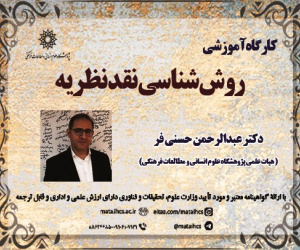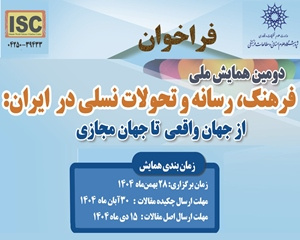رهیافتی زبان شناختی بر جایگاه و نقش آفرینی «کلمه» و «جمله» به عنوان واحدهای زبانی در فرآیند ترجمه قرآن کریم (موردکاوی سوره مبارکه فاتحه) (مقاله علمی وزارت علوم)
درجه علمی: نشریه علمی (وزارت علوم)
آرشیو
چکیده
مترجمان قرآن کریم در ترجمه های خود به واحدهای زبان اعم از واج، واژه، ترکیب، عبارت و جمله توجه کرده اند و روش ترجمه خود را لفظ به لفظ، تحت اللفظی، آزاد (اقتباسی)، تفسیری و معنایی (مفهومی، گویا، محتوا به محتوا) انتخاب نموده اند. هر یک از روش های ترجمه، به یک واحد زبانی متکی است و مترجمان رویکرد خود را بر اساس آن تعریف می کنند. پژوهش حاضر با رویکرد درزمانی و به روش توصیفی- تحلیلی، فرآیند تحولی واحدهای زبانی را در انواع روش های ترجمه قرآن کریم و سیر تحولی آنها را در طول زمان و با تکیه بر ترجمه های سوره فاتحه توضیح و تمایز هر کدام را با دیگری بررسی کرده و از طریق تعیین واحد های زبانی، نکات مثبت و منفی هر یک از این روش ها را به همراه چالش های موجود در فرآیند ترجمه قرآن تببین نموده است. نتیجه نشان می دهد تحولات مربوط به روش ها ی ترجمه قرآن کریم در دو زمینه رویکرد و واحدهای زبانی بوده است؛ به این معنی که از نویسنده محوری یا مخاطب محوری به واحدهای زبانی تکیه داشته و از کلمه به جمله تحول یافته است؛ همچنین مترجمان قرآن کریم در ابتدا برای رعایت دقت و امانت، از واحد زبانی کلمه بهره مند شدند و روش ترجمه لفظ به لفظ را پیشنهاد کردند، سپس به جمله محوری روی آورده و روش هایی از قبیل ترجمه معنایی و تفسیری را به کار گرفتند؛ بنابراین تفاوت غالب ترجمه های سوره فاتحه در سطح معانی اولیه کلمات، آیات و کل سوره می باشد که این مسأله از نگاه نویسنده محوری یا مخاطب محوری به قرآن ناشی شده است.A linguistic approach on the role of "word" and "sentence" as linguistic units in the process of translation of the Holy Quran (case study of Surah Mubaraka Fatiha)
In their translations, the translators of the Holy Quran have paid attention to language units such as phonemes, words, combinations, phrases and sentences and they have chosen their translation method word by word, literal, free (adaptation), interpretative and semantic (conceptual, expressive, content to content). Each translation method relies on a linguistic unit and translators define their approach based on it. The present study, with a diachronic approach and descriptive-analytical method, examines the evolutionary process of linguistic units in various methods of translation of the Holy Quran and their evolution over time, and based on the translations of Surah Fatiha, explained and distinguished each one from the other. And by determining the linguistic units, the writer has explained the positive and negative points of each of these methods along with the challenges in the process of translating the Quran. The result shows that the developments related to the methods of translation of the Holy Quran have been in two fields of approach and linguistic units; It means that it is based on linguistic units from author-oriented or audience-oriented and has evolved from word to sentence; Also, in the beginning, the translators of the Holy Quran benefited from the linguistic unit of the word and proposed the method of word-for-word translation, then they turned to sentence-oriented and used methods such as semantic and interpretive translation. Therefore, the main difference between the translations of Surah Al-Fatiha is in the level of the primary meanings of the words, verses and the entire surah, which is caused by the author-oriented or audience-oriented view of the Qur'an.







